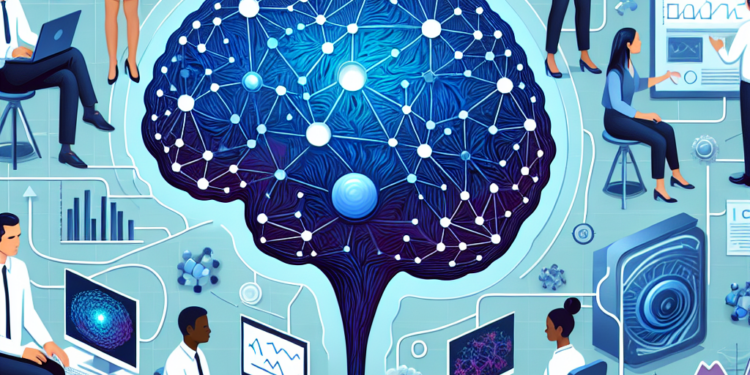Artificial Intelligence (AI) has become an integral part of our daily lives, from virtual assistants like Siri and Alexa to advanced technologies like self-driving cars and facial recognition systems. AI models are the backbone of these technologies, determining their efficiency and accuracy. However, AI models are not perfect and can often produce incorrect results due to various factors, such as biased training data, inadequate algorithms, or incorrect parameters.
To overcome these challenges and optimize AI models for better results, it is essential to employ a combination of strategies and techniques that improve the performance and reliability of the models. In this article, we will explore some of the key ways to optimize AI models for better results and discuss how these strategies can help in achieving higher accuracy and efficiency in AI applications.
1. Data Preprocessing and Augmentation
One of the most critical aspects of optimizing AI models is data preprocessing and augmentation. Data preprocessing involves cleaning and transforming raw data into a format that is suitable for training AI models. This process includes removing missing values, normalizing data, and handling outliers to ensure that the data is of high quality and can be effectively utilized by the model.
Data augmentation is another technique that can help enhance the performance of AI models. By generating new data samples from existing data through techniques like rotation, flipping, or zooming, data augmentation can increase the diversity and volume of the training data, leading to better generalization and improved performance of the model.
2. Feature Engineering
Feature engineering is the process of selecting and transforming relevant features from the input data to improve the performance of AI models. By identifying the most important features and creating new features that capture additional information, feature engineering can enhance the predictive power of the model and reduce overfitting.
There are various techniques for feature engineering, such as one-hot encoding, feature scaling, and dimensionality reduction, that can help optimize AI models and improve their efficiency and accuracy. By carefully selecting and transforming features, AI models can learn more effectively from the data and make better predictions.
3. Model Selection and Hyperparameter Tuning
Selecting the right model architecture and hyperparameters is crucial for optimizing AI models. Different models have different strengths and weaknesses, and choosing the best model for a specific task can significantly impact the performance of the AI application.
Hyperparameter tuning is the process of selecting the optimal values for the hyperparameters of the model to achieve the best performance. By experimenting with different hyperparameter configurations and using techniques like grid search or random search, developers can fine-tune their models and optimize their performance for better results.
4. Regularization and Dropout
Regularization and dropout are techniques used to reduce overfitting in AI models, which occurs when the model performs well on the training data but fails to generalize to new, unseen data. Regularization involves adding a penalty term to the loss function to prevent the model from becoming too complex and overfitting the training data.
Dropout is a technique that randomly drops neurons from the model during training to reduce co-adaptation among neurons and prevent overfitting. By using regularization and dropout, developers can improve the generalization ability of AI models and achieve better results on unseen data.
5. Transfer Learning
Transfer learning is a technique that leverages pre-trained models to improve the performance of new models on related tasks. By transferring knowledge learned from one task to another, transfer learning can significantly reduce the amount of labeled data needed for training new models and improve their performance.
By fine-tuning pre-trained models on new data or extracting features from pre-trained models and training new models on top of them, transfer learning can help optimize AI models and achieve better results in various applications, such as image recognition, natural language processing, and speech recognition.
6. Ensembling and Stacking
Ensembling and stacking are techniques that combine multiple AI models to improve their overall performance. Ensembling involves aggregating the predictions of several models to make a final prediction, while stacking involves training a meta-model on the predictions of multiple base models to make a final prediction.
By combining the strengths of different models and leveraging the diversity of their predictions, ensembling and stacking can significantly boost the performance of AI models and achieve better results than individual models alone. These techniques are particularly useful in tasks that require high accuracy and robustness, such as computer vision and natural language processing.
7. Monitoring and Feedback Loop
Lastly, optimizing AI models for better results also requires continuous monitoring and feedback to ensure that the models remain accurate and up-to-date. By monitoring the performance of the models in real-time and collecting feedback from users and stakeholders, developers can identify potential issues and improve the models accordingly.
By implementing a feedback loop that incorporates user feedback, monitoring metrics, and model updates, developers can continuously optimize AI models and ensure that they deliver accurate and reliable results. This iterative process of monitoring and feedback is essential for maintaining the performance of AI models over time and adapting them to changing conditions and requirements.
In conclusion, optimizing AI models for better results requires a combination of strategies and techniques that enhance the performance and reliability of the models. By employing data preprocessing and augmentation, feature engineering, model selection and hyperparameter tuning, regularization and dropout, transfer learning, ensembling and stacking, as well as monitoring and feedback, developers can optimize AI models and achieve higher accuracy and efficiency in various applications.
As AI continues to advance and become more prevalent in our daily lives, the need for optimizing AI models for better results will only become more critical. By understanding the key strategies and techniques for optimizing AI models and implementing them effectively, developers can ensure that their AI applications deliver accurate, reliable, and efficient results that benefit users and society as a whole.













